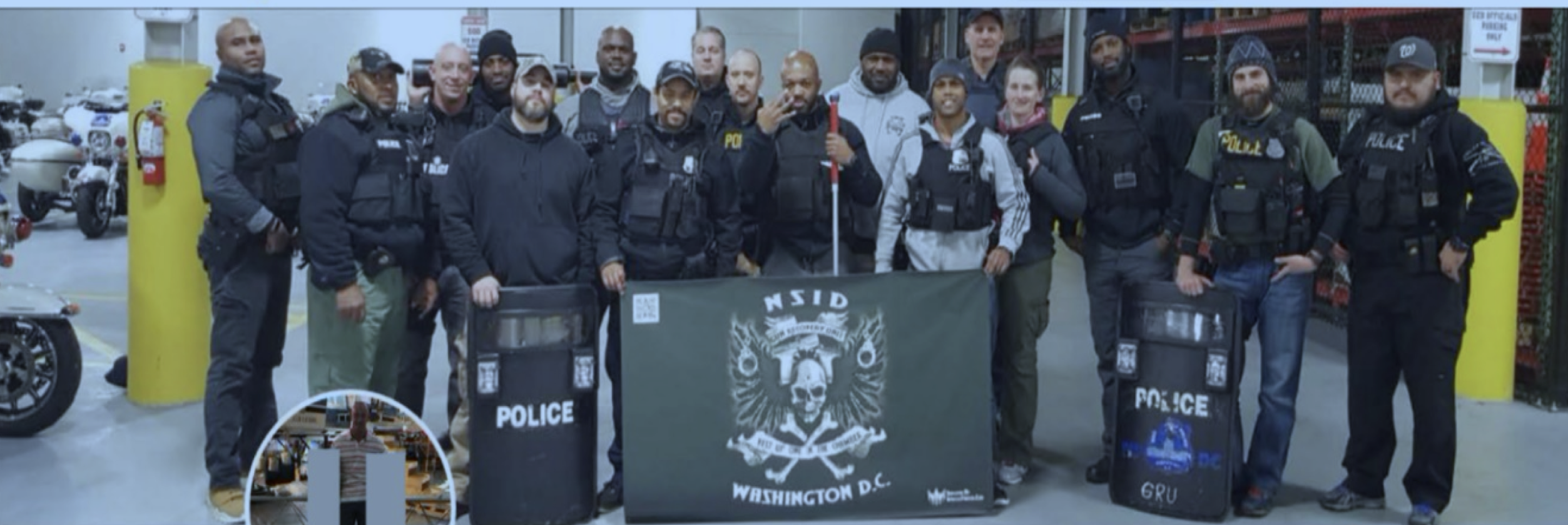
When is D.C. person seized for Fourth Amendment purposes?
The first question in any case in which the legality of a Fourth Amendment search is being challenged is when the seizure occurred.
The next question then becomes: What did police officers know at the time of this seizure?
If the facts known to them constituted either reasonable suspicion or probable cause, then the seizure was legal. If there was no legal basis for the stop, then the court should preclude the government from introducing any evidence obtained as a result of the illegal stop. That evidence would be considered the “tainted fruit of the forbidden tree.”
*****
The case law on the definition of seizure has jumped around in recent years. Providing clarity on the issue should be the recent D.C. Court of Appeals decision in Donte J. Carter v. United States, __ A.3d __ (D.C. 2025).
*****
Donte Carter was among a group of 10 black men “conversing on a sidewalk” when five members of the former Gun Recovery Unit (GRU)(subsequently renamed Violent Crime Impact Team) pulled up in two unmarked vehicles.
The officers were wearing tactical vests with “police” written on the back. Also visible were handcuffs, firearms, and other police equipment. The officers were in the area because of “an uptick in shootings and sounds of gunfire” in the area.
The officers announced that they were “checking for firearms,” and one of the men lifted his shirt to reveal his empty waistband.
One of the officers then turned his attention to Carter. Specifically, standing within three or four feet of Carter, the officer asked Carter how he was doing. Carter said “what’s up” and turned away.
The officer moved closer to Carter. But before the officer could say anything else, Carter lifted his shirt to show his waistband and then lowered it.
As Carter lifted his shirt, the officer asked him if he had anything on him. When Carter said no and lifted his shirt again, the officer asked him to “hike” up his pants “real quick.” Carter complied with this request. He also lifted up his shirt again and then put it back down.
While this was happening, another officer also began to approach Carter. When he was about six to ten feet away, he noticed an L-shaped bulge in Carter’s groin area which he believed to be a gun.
The officers frisked Carter and recovered a firearm.
*****
In order to determine whether a person has been seized for Fourth Amendment purposes, the court will “ask whether in view of all the circumstances surrounding the defendant’s encounter with law enforcement, an objective and reasonable person in the defendant’s shoes would have felt free to terminate the interaction and go about [their] business.”
Factors that the court will consider in making this determination include:
- the number of officers present;
- the display of a weapon by an officer;
- physical touching of the defendant;
- use of language and tone of voice indicating the compliance with the officer’s request is compelled;
- use of accusatory questions;
- repeated questioning, including refusal to accept answer given;
- whether encounter was at night or in secluded location;
- whether the defendant was alone;
- whether officers blocked potential exit paths or “means of egress.”
In addition, beginning with Dozier v. United States, 220 A.3d 933 (D.C. 2019), courts are now beginning to factor the defendant’s race into this equation. As the court put it in this case, it should “come as no surprise that Black Americans often perceive their interactions with law enforcement differently than other demographics.” (Internal quotations omitted.)
*****
In denying Carter’s motion to suppress evidence, the trial court rejected Carter’s argument that he was seized when the officer asked him to raise his pants. This was, the D.C. Court of Appeals held, a mistake:
We hold that Mr. Carter was seized within the meaning of the Fourth Amendment when [the officer] requested that he raise his pants. The combination of the impressive show of authority reflected in the officers’ initial approach and the accusatory and repetitive nature of [the officer’s] questioning already resembled a scenario in which we held a seizure took place. Compounding the compulsive effect of the police tactics here was that they were against a man for whom, by virtue of his race and lived experiences, it would have been objectively reasonable to be apprehensive around police officers. Given the facts of this case, we believe that such apprehension would have led an objective and reasonable Black man in Mr. Carter’s shoes to feel as though he had to comply with the officers’ demands rather than terminating the encounter.
*****
Judge Lynn Leibovitz presided at the motions hearing and at trial. Kevin Robertson represented Carter at trial, and Brian Shefferman represented him on appeal.
